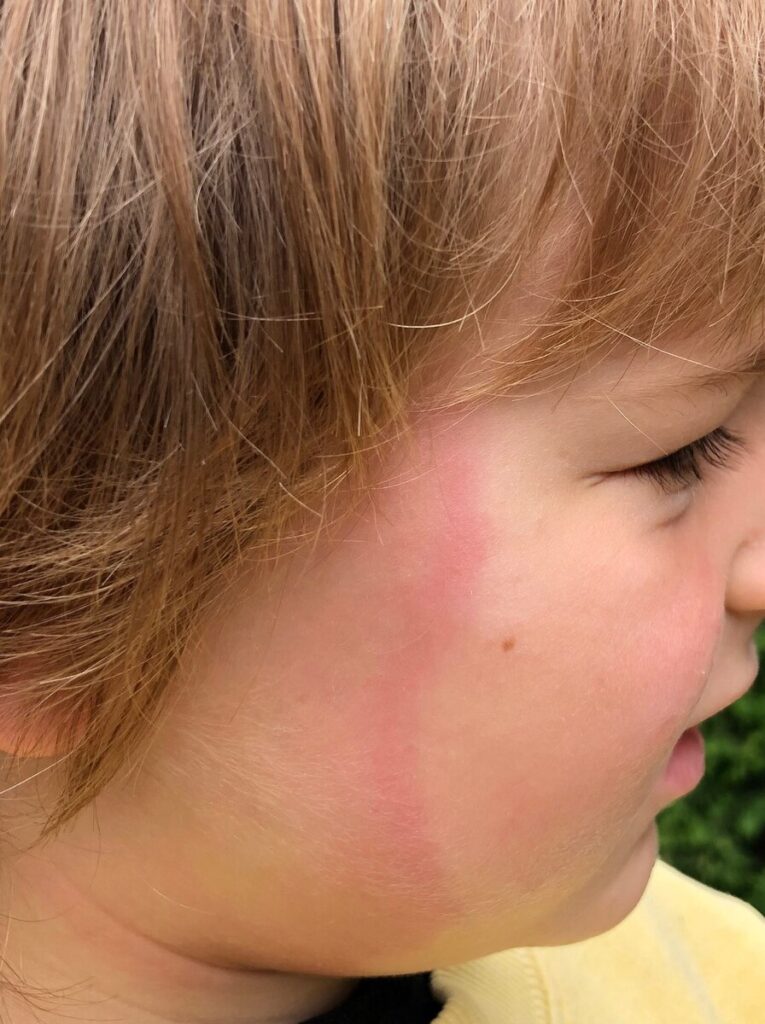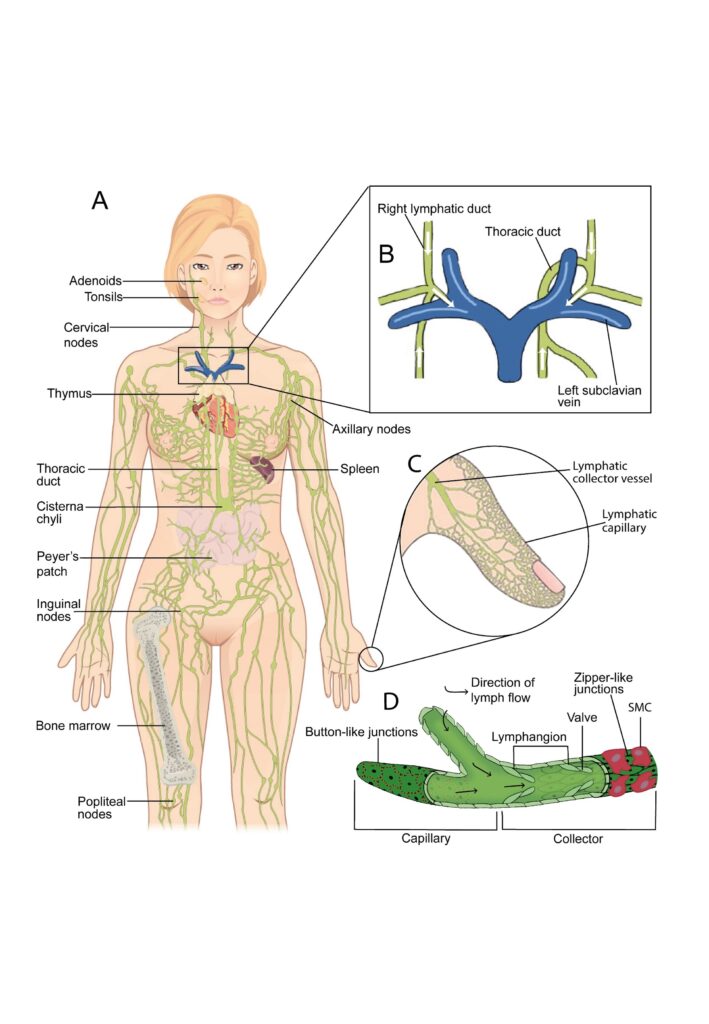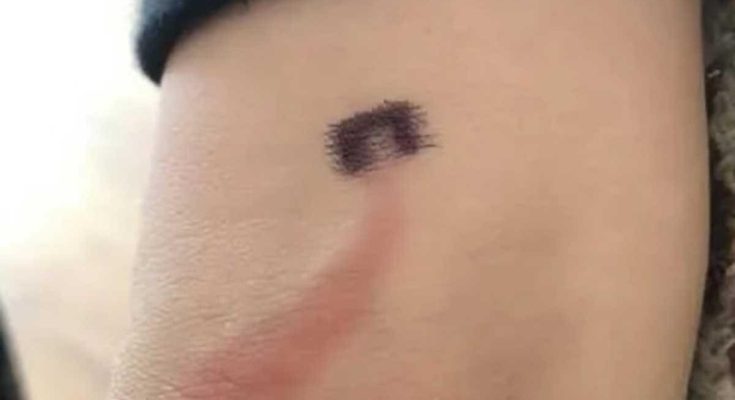It is critical that parents monitor their children’s health and wellbeing, particularly in regards to injuries and potential illnesses.
Children frequently sustain little cuts and scrapes, but occasionally these injuries can worsen and require medical attention.
Red tracking lines are an important indicator that parents should be aware of, since they may point to a problem that is getting worse and needs urgent medical attention.
Everything you need to know about tracer lines is right here, including what they are, why parents should look for them, how to identify them, and what to do if your child has them.
How do tracking lines work?
Tracking lines, sometimes known as lymphangitis, are red lines on the skin that extend from the infection site. It serves as a warning indicator that the lymphatic system is becoming infected and expanding.
Tracking lines show a more advanced state of infection, even though fever, redness, and swelling of the skin are common signs of infection.

What is the lymphatic system?
The lymphatic system is the network of tubes that carries white blood cells in a clear fluid called lymph.
The lymphatic system plays a vital role in the immune system by eliminating harmful germs and viruses from the body’s tissues through the use of lymph nodes, which are tiny organs shaped like beans.
Lymph nodes, which are found on the neck, beneath the arms, and in the groin, cover the entire body. An infection can cause these capillaries to enlarge and become inflamed with fluid, which can be uncomfortable.

Why are tracking lines a risk?
It is critical to identify the tracking lines because they may suggest that the infection is expanding beyond the site of the initial injury.
Sepsis and other major repercussions may arise if these monitoring lines are not appropriately detected and handled.
Sepsis, a potentially lethal illness, can arise if the infection spreads throughout the body.
It can cause organ failure and death if untreated. Because of their underdeveloped immune systems, children and people with weakened immune systems are more vulnerable to sepsis.
It’s crucial to remember that not all tracking lines are brought on by infections; some can instead be the consequence of trauma or surgery. But, it’s best to get your child medical attention as soon as you see any of these symptoms.
How to recognize tracking lines and what they look like
Tracking lines can have a variety of appearances, from soft to harsh. It is noteworthy that individuals with darker skin tones could be harder to identify.
In addition to the obvious signs, the infection can also produce fever, headaches, and muscle soreness. If your child has any wounds, scrapes, or other injuries, you need to watch out for them.
Use an antibiotic and adequately clean all wounds, no matter how little. Keep them wrapped and clean.
Keep an eye on your child’s injuries every day to see if any tracking lines appear.
See your doctor right away if you have even the slightest suspicion that it could be an infection and that it is spreading.
What types of infections usually lead to stretch marks?
Typically, bacterial infections caused by Staphylococcus or Streptococcus species result in trace lines.
Furthermore, bite wounds as well as cuts and scratches that happen underwater may expose the victim to a variety of germs. Moreover, this may result in the development of tracking lines.
What to do if your child observes them
As soon as parents see tracking lines on their child, they need to take them to the doctor.
When trace lines are discovered early in the illness process, antibiotics can be administered right away.
Marking the affected region with a pen can help track the infection’s growth and keep an eye on the spread of redness if there is noticeable inflammation surrounding a cut or bite.
Operation of tracking lines
In order to destroy the germs that cause lymphangitis, antibiotics are typically employed to treat the condition.
Surgery could be necessary in specific cases to remove infected tissue or drain pus from an abscess.
If your lymphangitis is severe, your doctor might want to admit you to the hospital so he can administer intravenous (IV) antibiotics and fluids.
The last word
As a responsible parent, you must safeguard your child’s health by being aware of potential health concerns and indicators, such as lines in case of infection.
Parents who understand how important it is to recognize and respond to such symptoms can guarantee early intervention, halt the disease’s spread, and lower the likelihood of negative outcomes.
Never forget that your child’s health could be in danger and that prompt action can help ensure that they receive professional medical attention.

In summary, it’s important to keep a close eye on your child’s health, particularly when it comes to spotting any warning indications of potentially dangerous diseases.
An essential sign that the infection may be spreading and impacting the lymphatic system is red tracking lines or lymphangitis.
These lines, which frequently take the form of crimson streaks coming from the infection site, indicate that you should get medical help right away in order to avoid potentially fatal consequences like sepsis.
Knowing the function of the lymphatic system and the possible dangers of lineage tracing empowers parents to make well-informed decisions regarding the health of their children.
Even while not all follow-up lines point to dangerous infections, the emergence of these symptoms calls for close observation and prompt treatment.
Effective therapy and infection control depend on timely medical consultation and proper wound care.
Parents can prevent health issues from getting worse and safeguard their children’s wellbeing by being aware of these warning indicators and acting upon them.
When in doubt, never put off getting your child medical attention since it’s critical to act quickly to safeguard their health.



